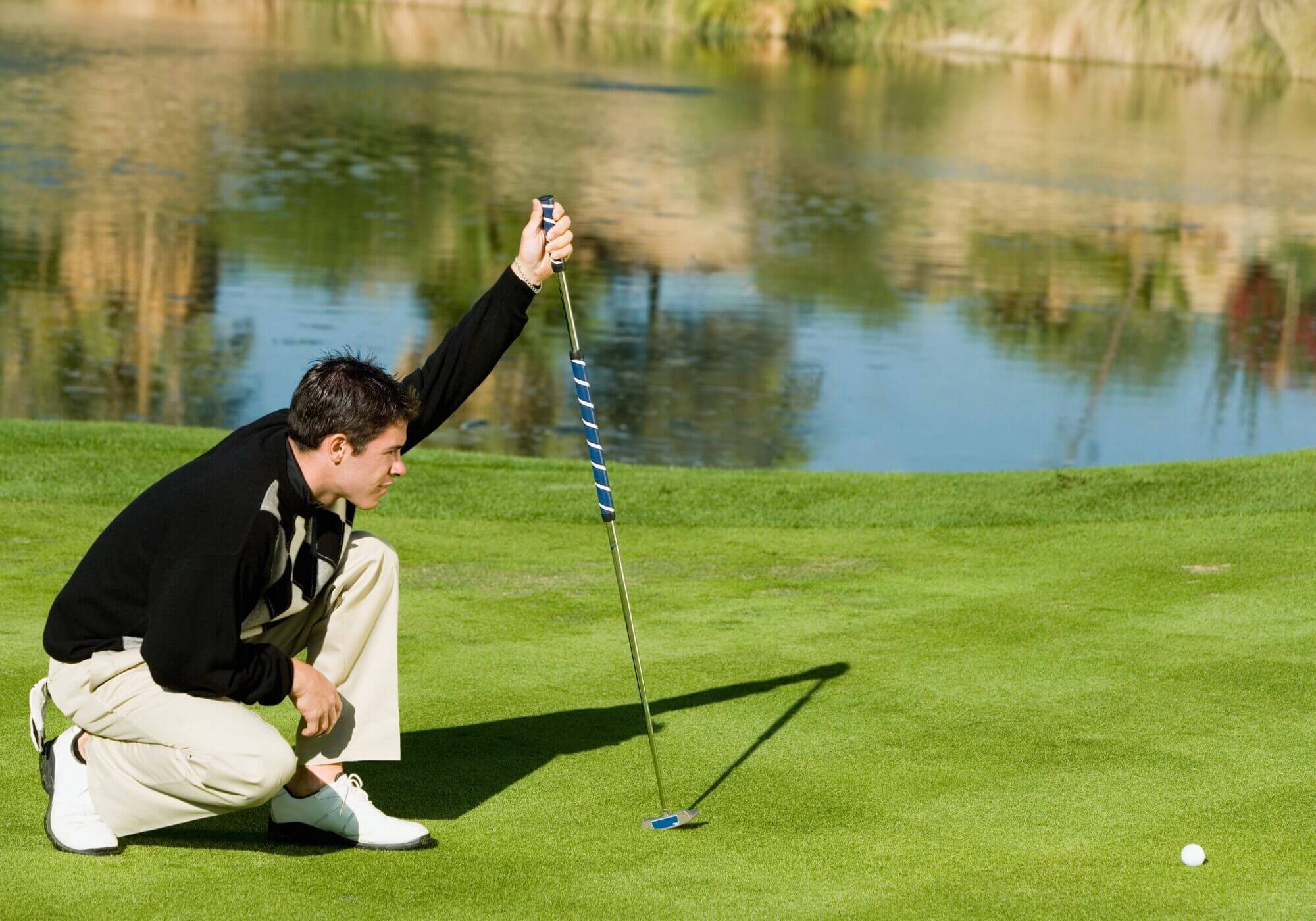Golfing News & Blog Articles
How To Aim In Golf: Alignment Basics For Beginners
One of the most overlooked fundamentals in golf is alignment. Even skilled players slip into bad habits. Right-handers start aiming left to compensate for a slice or right to make up for a hook. That usually makes things worse.
Fixing alignment doesn’t require a swing change. It’s a simple check that gives you more confidence and a better chance of starting the ball on line. Here are some basics to help you start lining up correctly.
Why alignment matters (and how it drifts)
Many golfers don’t realize how far their aim drifts. You might be 20 or even 40 yards left or right of the target without knowing it. Over time, your “golf eyes” adjust to a crooked setup and your brain creates swing compensations to get the ball back on line.
The best way to prevent this is to have an understanding of alignment and then a routine that checks your alignment on the course.
The two lines you must control (the “train tracks”)
Think of alignment as two parallel train tracks.
Clubface line (ball-to-target): Where the face points at impact. This determines where the ball starts. Body line (toe-to-target): Your feet, knees, hips and shoulders should be set parallel to the target line (not pointing directly at the target itself).
Your alignment routine
One of the best ways to ensure proper alignment in golf is to have a routine. Practice this routine on the driving range and then, when you start using it on the course, it will become second nature for you.
Pick a precise target in the distance—like the top of a tree, a flagstick or a yardage sign. Choose an intermediate spot just a few inches in front of the ball (a leaf, old divot, dark blade of grass) that is on the same line as your precise target. Aim the clubface first: Set the bottom groove square so it points through the ball, through the spot, to the intermediate target. Build your stance while looking at the target: Step in, keep your feet parallel to that line and match knees, hips and shoulders. Quick toe check: On the range, drop a club across your toes every few balls to confirm you’re parallel. Last look and go: One glance at the target, trust it, swing.Aiming on the tee box
The tee box gives you control to set your ball on the tee how you want. Take advantage of this, especially as a new player. Line up your ball’s printed stripe (or a Sharpie line) with your target before you set your feet. If you play a fade or draw, set the clubface to your starting line, not where you hope the shot finishes. That frees your swing instead of forcing compensation mid-swing.
Aiming from the fairway
You can’t move the ball here so rely on the same process: distant target, intermediate spot, square clubface, parallel stance. Once you’ve chosen a smart target, commit to it. Don’t let nearby hazards pull your alignment off course.
Most importantly, before you swing, make sure you have not adjusted your alignment. Once you pick your line, stick with it.
Aiming on the green (Putting)
Interestingly, putting is where alignment matters most. On the tee or from the fairway, your line can be a little off and you’ll likely still end up in the vicinity of your target. On the putting green, even just an inch off on your alignment, you’ll miss the putt.
Start by marking and replacing the ball with its line aimed exactly at your start line. Square the putter face to that line, then build your stance parallel to it. On very short putts, it may look or feel like your feet are left of the hole (for right-handers)—that’s just a visual perspective, not a mistake. Once you trust the line, the only job left is matching it with the right pace.

Aiming for chips and bump-and-runs
For short shots around the green, pick a landing spot rather than the hole. Align the clubface to that spot, then match your body lines parallel. Because the ball rolls like a putt once it lands, factor in the break just as you would on the green.
Quick alignment checks
Toe-line check: Drop a club across your toes, step back and confirm it’s parallel to your ball line. Shoulder check: Grip the club low with your trail hand, lay it across your chest and see if it points toward the target. Bottom groove check: Make sure the leading edge is square at setup; don’t trust your eyes alone.Final thought
Alignment won’t guarantee a perfect swing but it will guarantee that your swing has a fair chance. Always aim the clubface first, then match your body lines to it. Build this into every shot and you’ll stop fighting compensatory habits and start hitting the ball where you want it to go.
The post How To Aim In Golf: Alignment Basics For Beginners appeared first on MyGolfSpy.


